|
Beauty in Tudor Times
Click EasyEdit to add to this page! (Don't see the EasyEdit button above? <a href="/#signin" target="_self">Sign in</a> or <a href="/accountnew" target="_self">Sign up</a>.) |
|
"Renaissance woman used cosmetics and devoted particular attention to her hair (a refined art, especially in Venice), dyeing it a shade of blonde that often tended toward red..." ~ History of Beauty ed. Umberto Eco [potassium lye or caustic soda being used to bleach the hair.]
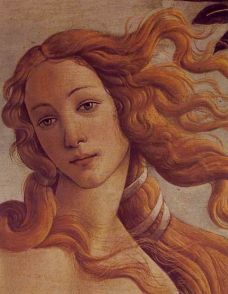 "Sparkling eyes set far apart, with whitened skin unmarred by freckles and tinted with a high and contrasting colouring, were regarded as the epitome of feminine loveliness. Both Katherine and her cousin, Anne Boleyn, had these characteristics, and although the Venetian Ambassador was not captivated by Anne's charms, he admitted that her eyes were black and beautiful and that these more than anything else pleased the King. Katherine Howard was not unlike her cousin, and legend has it that she was Henry s most beautiful queen. What ever the truth, all her critics agree that she had auburn hair, was small, plump and vivacious overflowing with so much vitality that Marillac could write that he had nothing to report except a continuous round of banqueting and dancing at court." ~ A Tudor Tragedy by Lacey Baldwin Smith "Sparkling eyes set far apart, with whitened skin unmarred by freckles and tinted with a high and contrasting colouring, were regarded as the epitome of feminine loveliness. Both Katherine and her cousin, Anne Boleyn, had these characteristics, and although the Venetian Ambassador was not captivated by Anne's charms, he admitted that her eyes were black and beautiful and that these more than anything else pleased the King. Katherine Howard was not unlike her cousin, and legend has it that she was Henry s most beautiful queen. What ever the truth, all her critics agree that she had auburn hair, was small, plump and vivacious overflowing with so much vitality that Marillac could write that he had nothing to report except a continuous round of banqueting and dancing at court." ~ A Tudor Tragedy by Lacey Baldwin Smith
(ca. 1445 – 1510) Birth of Venus
La Bella Simonetta was the most
celebrated beauty of Florence’s
Golden Age and considered, the "It" girl of the Renaissance. |
|
| |
| | 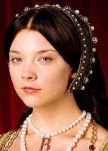 |  | 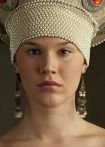 | 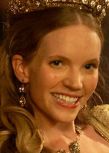 | 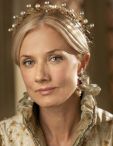 | Katherine
of Aragon | Anne
Boleyn | Jane Seymour | Anne of Cleves | Katherine Howard | Catherine
Parr | | | 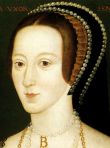 |  | 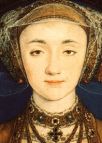 | 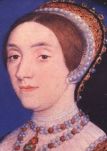 | 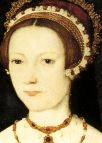 | Eyes: light
Hair : Red gold
Height: about 5'0" to 5'1"
[some say less than 5ft]
Short | Eyes: dark
Hair: Brunette
Height : 5'3"
[from the Victorian doctor who examined her skeleton, if correct]
Middling | Eyes: light
Hair: light
Height: Middling | Eyes: dark
Hair: light
Height: Tall | Eyes: dark
Hair: Auburn
Height: Petite | Eyes: dark
Hair: Some portraits show reddish brown
(one portrait shows blonde & a lock of hair from her after death is blonde)
Height: Probably the tallest of Henry's wives (5'10) | "There were few women who could compete with the queen in her prime". ~ Sir Thomas More
"The most beautiful creature in the world." ~ Fray Diego | “beautiful and with an elegant figure”...eyes always most attractive which she knew well how to use with effect. Sometimes leaving them at rest and at others, sending a message to carry the secret witness of the heart. And, truth to tell, such was their power that many surrendered to their obedience” - Lancelot de Carles, a french contemporary poet | "the richer queen Jane was dressed the fairer she appeared; on the contrary, the better Anne Boleyn was apparelled the worse she looked: but queen Jane was the fairest of all Henry's wives" ~ Sir John Russell, a member of the privy council
| "apparelled in a gown of rich cloth of gold ...her hair hanging down, which was fair, yellow and long"...it goes on to say her costume "so set forth her beauty and good visage, that every creature rejoiced to behold her" (apart from her husband it seems) ~ Hall's 'Chronicles' describing Anne at her wedding
| " a young lady of moderate beauty but superlative grace, of small stature, of modest countenance and gentle earnest face"... ~ Ambassador Marillac
| Anne Of Cleves "is in despair and much afflicted in consequence of this late marriage of the King with a lady [[[Catherine Parr]]] who, besides being inferior to her in beauty, gives no hope whatever of posterity to the King, for she had no children by her two first husband."
- Ambassador Chapuys | | In 1519 Francis I is known to have said Henry was "Young & Handsome" while he ungallantly said Katherine was " Old & Deformed" probably due to her being overweight and under 5 foot in height. | As a young girl, Anne made a great impression at the French court , even Francis I admired her and wrote:
(Venus était blonde, on m'a dit:
L'on voit bien, qu'elle est brunette)
Venus was blonde, I've been told:
Now I see that she's a brunette!
| Ambassador Chapuys said : "She is of middle height and nobody thinks that she has much beauty. Her complexion is so whitish that she may be called rather pale..... | She was described by the French ambassador Marillac, as tall and thin, "of middling beauty, with a determined and resolute countenance." |
|
| In 1531, Katherine was described by an Italian courtier as:
"If not handsome she is not ugly; she is somewhat stout and always has a smile on her countenance."
| Nicholas Sander who was responsible for most of the negative comments about Anne, said : “She was handsome to look at, with a pretty mouth”
“very eloquent and gracious, and reasonably good looking” - John Barlow, one of Anne's clerics
“Very beautiful” - Francesco Sanuto, Venetian Diplomat
“Young and good-looking” - "Original Letters" of Simon Grynee | Polydore Vergil described Jane as: "A woman of the utmost charm both in appearance and character" | English ambassador, Christopher Mont reported that, ‘She excelleth the Duchess
[ a renowned beauty], as the golden sun excelleth the silver moon.’
|
|
|
| In 1532, a new Venetian ambassador described Anne as
'not one of the handsomest women in the world. She is of middling stature, with a swarthy complexion, long neck, wide mouth, bosom not much raised, and in fact has nothing but the King's great appetite, and her eyes, which are black and beautiful - and take great effect on those who served the Queen when she was on the throne' |
|
|
|
|
| By 1536, Ambassador Chapuys who had no love for Anne Boleyn calling her the concubine and wh*re, would call her "a thin old woman" |
|
|
|
|
|
|
|
|
|
|
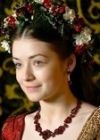 | 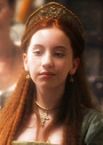 | 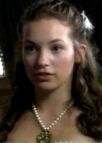 | 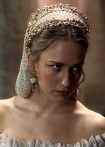 | 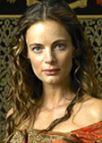 |
| Princess
Mary
Tudor
| Princess Elizabeth Tudor | Mary
Boleyn | Elizabeth Blount | Mary Tudor - called
Princess Margaret Tudor
in the series
| Elizabeth FitzGerald |  | 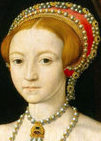 | | 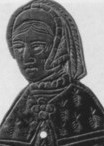 | |  | Eyes: Light
Hair: Red
Height: 5'2" to 5'4"
Short
| Eyes: Dark
Hair: Red
Height: 5'3" to 5'5"
Middling to tall by Tudor standards
| Eyes:
Hair: light
Height:
| Eyes:
Hair:
Height:
| Eyes: light
Hair: Red
Height: tall
| Eyes:
Hair: Red
Height:
| "She is of low rather than of middling stature, but, although short, she has not personal defect in her limbs, nor is any part of her body deformed. She is of spare and delicate frame, quite unlike her father, who was tall and stout; nor does she resemble her mother, who, if not tall, was nevertheless bulky. Her face is well formed, as shown by her features and lineaments, and as seen by her portraits. When younger she was considered, not merely tolerably handsome, but of beauty exceeding mediocrity....
In short, she is a seemly woman, and never to be loathed for ugliness... she requires to be blooded either from the foot or elsewhere, which keeps her always pale and emaciated."
~ Giovanni Michieli who was the Venetian Ambassador to Mary's court near the end of her reign. | “Slender and straight; her hair inclined to pale yellow; her forehead large and fair; her eyes lively and sweet, but short sighted, her nose somewhat rising in the midst; her countenance was somewhat long, but yet of admirable beauty, in a most delightful composition of majesty and modesty”
Sir John Hayward.
“Her face is comely rather than handsome, but she is tall and well-formed, with good skin, though swarthy; she has fine eyes.”
Venetian Ambassador, Giovanni Michiele, 1557
Sir Francis Bacon described her as “tall of stature”. |
| She 'was thought, for her rare ornaments
of nature, and education to be
the beauty
and mistress-piece of her time'.
~ Lord Herbert, a contemporary | The Venetian Ambassador described her as “a Paradise—tall, slender, grey-eyed, possessing an extreme pallor”
Erasmus said of her that "Nature never formed anything more beautiful." |
|
The poet John Heywood wrote: “her beauty twinkleth like a star within the frosty night.” |
|
|
|
|
|
|
Contemporary portraits of beauties from the late 15th century and early 16th century:
Common features were the wide set, heavy lidded eyes with very thin eyebrows,
often an aquiline or strong nose with a small mouth, wide forehead, rounded chin and long neck.
| | "Extensive use of face powders was just beginning to become fashionable in court circles, and society had not yet adopted the painted mask of the Elizabethan belle who could scarcely blush with [the] sense of her own shame. Ladies of elegance in Henry's generation, however, adorned their face, neck, and pappis with ceruse or white lead, and coloured their cheeks with red ochre, vermilion, and purple, achieving a rather garish and artificial effect of peaches and cream. Eyebrows were plucked, and court ladies tempered their eyes by art, brightening them with belladonna and endeavouring to make them appear wide apart." ~ Lacey Baldwin Smith |
| Make -Up & Cosmetics | In the Middle Ages European cultures added to the popularity of pale skin. Pale skin became known as a sign of wealth and stature in society. Women went to great lengths to achieve white skin by resorting to bleeding themselves. Adding subtle pink as seen by the 13 th century added a further sign of societal wealth and importance. Only the wealthy could afford pink face makeup.
The focus of white skin as a sign of wealth continued into the Italian Renaissance. Again, women went to exaggerated measures to achieve status by using deadly ingredients such as lead and arsenic. By the Elizabethan Age, face makeup began to be associated with poor health. Women turned to egg whites to add a healthy glaze to the face. Heavy face makeup was used to hide disease and illness. |
| From "Book of the Courtier" 1513-18 by Baldasarre Castiglione :
" Haven't you noticed how much prettier a woman is if, when she makes up, she does so with so little that those who see her cannot tell whether she is made up or not? But others are so bedaubed that it looks like they are wearing a mask and dare not laugh because they fear it will crack. Such women never change colour except when they dress in the morning, and must spend the rest of the day like motionless wooden images.... How much nicer it is to see a woman, a good looking one I mean, who obviously has nothing on her face, neither white nor red, but just her natural colour, which may be pale or sometimes slightly tinged with a blush caused by embarrassment or the like, maybe with her hair toudled and whose gestures are simple and natural, without working at being beautiful?" |
|
LITERATURE:
- Eco, Umberto, ed History of Beauty
- Baldwin Smith, Lacey A Tudor Tragedy
- Ames-Lewis, Francis and Rogers, Mary, eds. Concepts of Beauty in Renaissance Art. London, 1998.
- Angeloglou, Maggie. A History of Make-up. London, 1970.
- Williams, Neville. Powder and Paint: A History of the Englishwoman's Toilet, Elizabeth I Elizabeth II. London, [1957].
- Romm, Sharon. The Changing Face of Beauty. St. Louis,1992
- Raffaella of Master Alexander Piccolomini, or rather A dialogue of the faire perfectioning of ladies: a work very necessarie and profitable for all gentlewomen or other. J.N [i.e. John Nevinson] trans. Glasgow, 1968.
- Orlin, Lena Cowen, Elizabethan Households, An Anthology. Washington DC, 1995.
- McLaughlin, Terence. The Gilded Lily. London, 1972.
- Furnivall, Frederick, ed. Caxton's Book of Curtesye. (printed at Westminster about 1477-8). London, 1868.
- Corson, Richard. Fashions in Makeup: From Ancient to Modern Times. New York, 1972.
- Boeser, Knut, ed. The Elixirs of Nostradamus: Nostradamus' original recipes for elixirs, scented water, beauty potions and sweetmeats [1552]. London, 1994.
| |